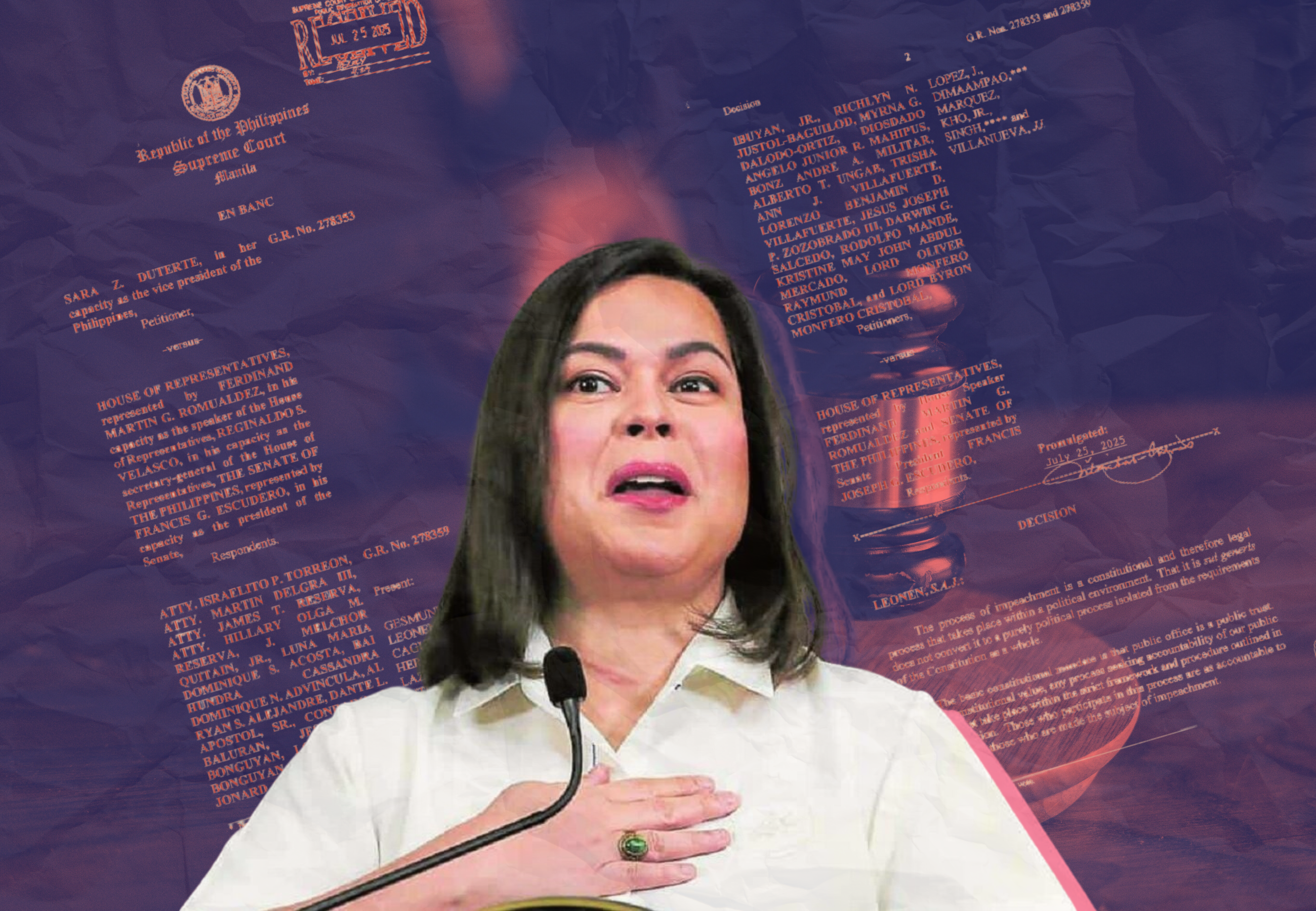Sara Duterte’s impeachment trial: Delayed by design

THE IMPEACHMENT of Vice President Sara Duterte is the first in Philippine history. The House of Representatives impeached the second highest official of the land on the grounds of “betrayal of public trust, culpable violation of the Constitution, bribery, graft and corruption and other high crimes.”
Transmitted by the House to the Senate right before both chambers adjourned for the election season, the seven articles of impeachment included Duterte’s alleged illegal disbursement of PHP612.5 million in confidential funds of the Office of the Vice President and the Department of Education (DepeD) which she used to head, her alleged bribery of DepEd officials involved in procurement; and her failure to disclose her properties in her statement of assets, liabilities and net worth (SALN).
Unfortunately, the historical record will show the long delay in starting the trial to hold her to account.. The Senate only convened as an impeachment court on June 10, more than four months since it received the impeachment complaint.
CMFR notes how the impeachment was stalled at every turn by different parties, primarily the Senate. Media’s coverage largely depended on the movements within the legislative chambers, noting points of postponement and delay. Reports also featured comments of legal luminaries, academics and other experts who have been involved in previous impeachment proceedings.
Delaying tactics in the Senate
Speaking for the chamber, Senate President Francis Escudero became the lead source in news reports. As recorded by the press, his statements did not commit to any plan of action.
In a press briefing on February 6, Escudero told the media that the trial would have to wait until after the midterm elections in May as the Senate would have to be in session to function as an impeachment court. Escudero said the earliest possible date for discussion would have to wait for the resumption of plenary sessions on June 2. On February 10, he told the media that the trial would likely begin during the new Congress in July. In the meantime, Escudero said the Senate would use the time to prepare the impeachment rules.
News reports cited counter arguments made by incumbent and former Congress members, academics and Constitutional framers that the Charter directs the Senate to “forthwith proceed” once it receives the articles of impeachment. These views also described the nature of impeachment, arguing that the impeachment is not a legislative function that requires the Senate to be in session. As there have been previous impeachment trials, there are already existing rules in place.
Citing Escudero’s views, media reports failed to provide this significant background. Reports focused on Escudero’s quotes, including his blamd the wording of the Constitution, saying the framers should have used the word “immediately” instead of “forthwith.”
When the Senate convened as an impeachment court on June 10, some senators allied with Duterte filed resolutions to dismiss the complaint. Instead of approving these resolutions, the Senate voted to “remand” or return the articles of impeachment to the House. The Senate ordered the House to certify that the complaint did not violate any provision in the Charter. News cited the views of legal experts who said the move “violated constitutional structures,” including grave abuse of discretion by the Senate towards a co-equal chamber.
The Senate decided to archive the impeachment complaint on August 6, which meant it would no longer be on the docket of active records.
Supreme Court’s hand
Meanwhile, the Supreme Court (SC) ruled that the impeachment complaint violated the Charter provision that only one complaint should be filed in a year. While the High Tribunal itself had no direct hand on the delay, its decision to nullify the impeachment complaint prompted the Senate to consider its dismissal, eventually deciding to archive the complaint.
Two news organizations, Rappler and Inquirer, cited legal experts who said archiving does not strictly render a complaint dead. However, should the SC reverse its ruling, the Senate would need a majority vote to retrieve the complaint and act on it.
In February, media had reported that Duterte herself and a group of Mindanao-based lawyers filed a petition before the SC challenging the constitutionality of the impeachment complaint and asking for a temporary restraining order against the proceedings. Both petitions said the impeachment complaint violated the Constitutional provision that “No impeachment proceedings shall be initiated against the same official more than once within a period of one year.” Three complaints were filed in December 2024, but none of these were referred to the House Committee on Justice.
The SC decision effectively favored the petitions, declaring as null and void the impeachment complaint that the House transmitted to the Senate. The ruling also added requirements in filing a complaint, which critics said were not in the Constitution and could actually slow down impeachment proceedings.
The media reported these developments, referring even to previous jurisprudence. As legal issues and technicalities are confusing enough, challenging the capacity of journalists to explain and interpret the ongoing discussion among experts.
Unfortunately, reports missed highlighting the essence of impeachment as a mechanism that can hold accountable the highest officials; one that should proceed with urgency or lose its effectivity. Reports failed to describe the delays as a betrayal of the constitutional mandate for prompt action on the part of the leaders of Congress. Journalists did not ask Escudero about the need for speed, or check with other experts about the delays as part of a political design.
The Senate has effectively cast the impeachment complaint in a virtual limbo while the Supreme Court holds hearings for reconsideration on its ruling. Accountability has been put on hold and the long watch begins.
Leave a Reply